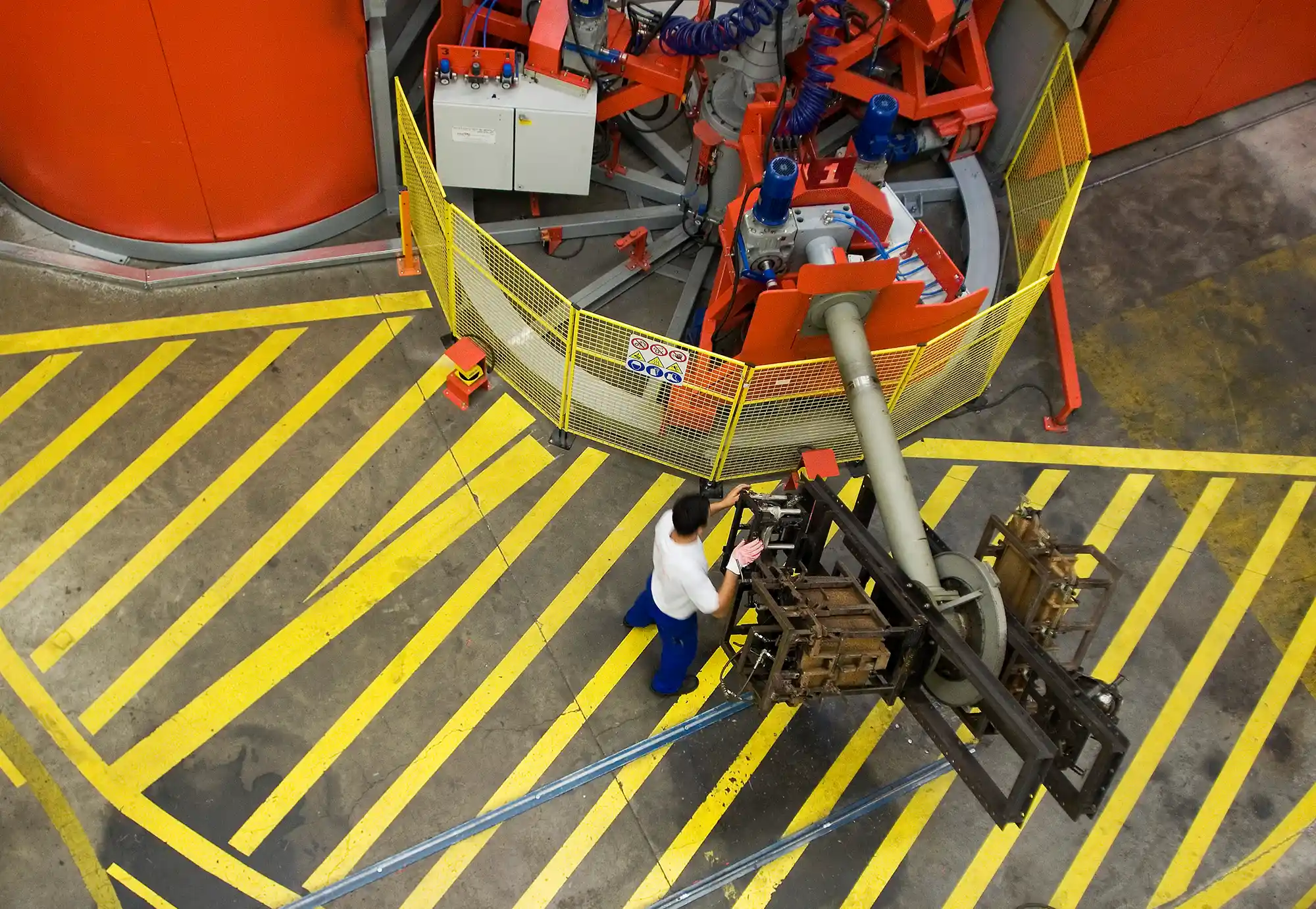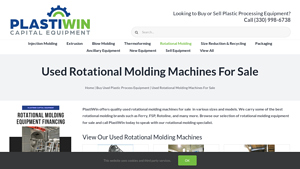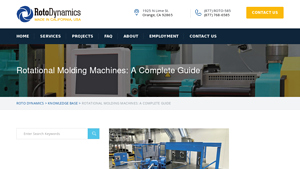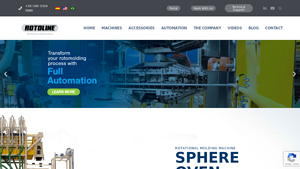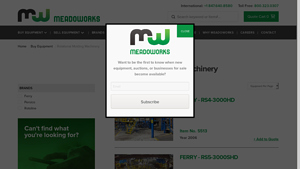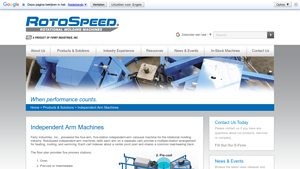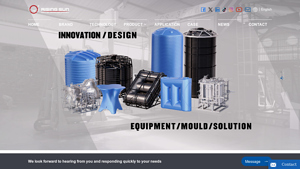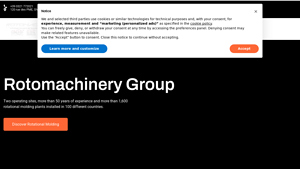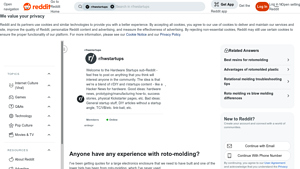Rotomolding Machine Guide: Type, Cost, Top List…
Introduction: Navigating the Global Market for rotomolding machine
In an increasingly interconnected world, sourcing the right rotomolding machine can be a daunting task for international B2B buyers. The challenge lies not only in identifying a machine that meets specific production needs but also in navigating diverse supplier landscapes across different regions. This guide aims to simplify the complexities involved in sourcing rotomolding machines by providing a comprehensive overview of the various types available, including clamshell, rock and roll, carousel, and shuttle machines. Each of these has unique features tailored to different production requirements, ensuring buyers can make informed choices based on their operational goals.
Furthermore, this resource will delve into the applications of rotomolding technology, highlighting its advantages in producing durable, high-quality components across industries. It will also cover critical aspects such as supplier vetting, cost considerations, and maintenance requirements, which are essential for maximizing ROI. By equipping B2B buyers, particularly from Africa, South America, the Middle East, and Europe—including emerging markets like Brazil and Vietnam—with actionable insights, this guide empowers them to make strategic purchasing decisions. Ultimately, our goal is to facilitate a smooth and efficient procurement process that enhances production capabilities and fosters sustainable growth in the competitive global market.
Understanding rotomolding machine Types and Variations
| Type Name | Key Distinguishing Features | Primary B2B Applications | Brief Pros & Cons for Buyers |
|---|---|---|---|
| Clamshell Machines | Opens and closes like a clamshell; compact design | Small part production, prototyping | Pros: Space-efficient, ideal for smaller parts. Cons: Limited for larger items. |
| Rock and Roll Machines | Rocks back and forth while rotating; even material distribution | Large, durable parts, toys, tanks | Pros: Produces consistent wall thickness. Cons: Requires more floor space. |
| Carousel Machines | Multiple mold stations on a rotating carousel | High-volume production of small to medium parts | Pros: Increased efficiency, simultaneous production. Cons: Higher initial investment. |
| Shuttle Machines | Uses a shuttle system to move molds between stations | High-volume production, versatility in part sizes | Pros: Flexible production, minimizes downtime. Cons: Complexity in operation. |
| Rotating Arm Machines | Features a rotating arm for precise control | Custom shapes, complex designs | Pros: Excellent for intricate designs. Cons: May have slower cycle times. |
What Are Clamshell Machines and Their B2B Relevance?
Clamshell machines are ideal for manufacturers focusing on small parts and prototyping. Their compact design allows them to fit into facilities with limited space, making them suitable for startups or smaller operations. When considering a clamshell machine, buyers should evaluate their production volume needs and the types of parts they plan to manufacture, as these machines excel in producing intricate small components but are not designed for larger items.
How Do Rock and Roll Machines Enhance Production?
Rock and roll machines are distinguished by their unique rocking motion, which ensures that the plastic resin evenly coats the mold. This feature is particularly beneficial for producing large, durable parts such as tanks and outdoor furniture. B2B buyers should consider the production capacity and space availability, as rock and roll machines require a larger footprint but deliver consistent quality and strength in the final products.
What Advantages Do Carousel Machines Offer for High-Volume Production?
Carousel machines are designed for efficiency, featuring multiple mold stations that operate simultaneously. This design is particularly advantageous for businesses looking to scale up production of small to medium-sized parts. When purchasing carousel machines, B2B buyers should assess their production goals and budget, as the higher initial investment can lead to significant long-term savings through increased output and reduced labor costs.
Why Choose Shuttle Machines for Versatile Production Needs?
Shuttle machines are characterized by their ability to move molds between heating and cooling stations, allowing for high-volume production. They are particularly versatile, accommodating various part sizes and shapes. B2B buyers should evaluate the complexity of their production requirements and the potential for reduced downtime, as shuttle machines can optimize workflow but may introduce operational complexity.
What Makes Rotating Arm Machines Suitable for Custom Designs?
Rotating arm machines are designed for precision, making them ideal for producing complex and custom-shaped parts. Their ability to control the molding process closely allows manufacturers to create intricate designs that would be challenging with other machine types. B2B buyers should consider the specific design requirements of their projects and the potential trade-off between cycle time and the level of detail achievable with rotating arm machines.
Key Industrial Applications of rotomolding machine
| Industry/Sector | Specific Application of rotomolding machine | Value/Benefit for the Business | Key Sourcing Considerations for this Application |
|---|---|---|---|
| Automotive | Fuel tanks and other components | Lightweight, durable parts that reduce overall vehicle weight | Ensure compliance with automotive standards and regulations |
| Consumer Goods | Outdoor furniture and toys | High-quality, weather-resistant products that enhance brand reputation | Look for machines capable of producing intricate designs |
| Construction | Water storage tanks | Cost-effective, large capacity solutions for water management | Evaluate the machine’s size and production efficiency |
| Medical Equipment | Medical storage and transport containers | Customizable, hygienic solutions that meet safety regulations | Consider machines that allow for precision and quality control |
| Agriculture | Agricultural containers and equipment | Durable, resistant to harsh conditions, enhancing operational efficiency | Assess the machine’s ability to handle specific materials like UV-resistant plastics |
How are Rotomolding Machines Used in the Automotive Industry?
In the automotive sector, rotomolding machines are utilized to manufacture components such as fuel tanks and other lightweight parts. The process allows for the creation of complex shapes with uniform wall thickness, which contributes to weight reduction and improved fuel efficiency. For international buyers, particularly in regions like South America and Africa, sourcing machines that comply with stringent automotive standards is crucial. Buyers should focus on machinery that offers durability and precision, ensuring that the end products meet safety regulations.
What Applications Exist for Rotomolding Machines in Consumer Goods?
Rotomolding machines play a significant role in producing outdoor furniture and recreational toys. The versatility of the process enables manufacturers to create intricate designs that are both aesthetically pleasing and functional. Weather resistance is a key advantage, making these products suitable for outdoor use. For buyers in Europe and the Middle East, sourcing machines that can accommodate diverse design requirements and materials is essential for maintaining a competitive edge in the market.
How are Rotomolding Machines Beneficial in Construction?
In the construction industry, rotomolding machines are primarily used to manufacture large water storage tanks. These tanks are cost-effective solutions that provide a reliable means of water management, particularly in regions where water scarcity is an issue. When sourcing machines for this application, buyers should evaluate production efficiency and the ability to create large, robust parts that withstand environmental stresses. Buyers from Africa and South America should also consider local availability of materials for optimal production.
What Role do Rotomolding Machines Play in Medical Equipment Manufacturing?
Rotomolding machines are essential for producing medical storage and transport containers, which require high levels of customization and hygiene. The rotomolding process allows for the creation of seamless, easy-to-clean products that comply with strict health regulations. International B2B buyers in the medical sector must prioritize sourcing machines that offer precision and quality control to ensure the safety and reliability of their products in the healthcare environment.
How is Agriculture Enhanced by Rotomolding Technology?
In agriculture, rotomolding machines are used to create durable containers and equipment that can withstand harsh conditions. These products are often UV-resistant and designed for long-term use, enhancing operational efficiency for farmers. Buyers, especially from regions like Africa and South America, should focus on sourcing machines that can handle specific agricultural plastics and provide robust production capabilities. Understanding local agricultural challenges can guide the selection of the right rotomolding solutions.
3 Common User Pain Points for ‘rotomolding machine’ & Their Solutions
Scenario 1: Navigating Equipment Selection Challenges in Rotomolding
The Problem: B2B buyers often face significant challenges when it comes to selecting the right rotomolding machine for their specific production needs. With various types of machines available—such as clamshell, rock and roll, carousel, and shuttle machines—making the right choice can be overwhelming. Buyers may struggle to understand the nuances of each type, leading to potential misinvestments and production inefficiencies. Additionally, considering factors like mold size, production volume, and product complexity can complicate the decision-making process, causing delays and frustration.
The Solution: To effectively navigate equipment selection, buyers should begin with a thorough assessment of their production requirements. Engage with a knowledgeable supplier or industry expert who can provide insights into the specific advantages and limitations of each machine type. Create a detailed production profile that outlines the dimensions, volume, and characteristics of the parts to be produced. Once this information is gathered, request demonstrations or case studies from suppliers showcasing how similar businesses successfully utilized specific rotomolding machines. This hands-on approach not only clarifies doubts but also builds confidence in the final purchasing decision.
Scenario 2: Addressing Maintenance and Downtime Issues
The Problem: Maintenance and unexpected downtime are common pain points for businesses utilizing rotomolding machines. Frequent breakdowns can lead to costly production halts, impacting delivery schedules and customer satisfaction. Buyers often find it challenging to identify the root causes of these issues or may lack access to timely and efficient maintenance services, resulting in prolonged periods of inactivity and lost revenue.
The Solution: To mitigate maintenance-related challenges, it is crucial for buyers to establish a proactive maintenance plan as part of their operational strategy. This plan should include regular inspections and servicing of the machinery, guided by the manufacturer’s recommendations. Buyers should also invest in training for their operational staff, equipping them with the skills to perform basic troubleshooting and maintenance tasks. Furthermore, establishing a close relationship with a reliable service provider can ensure quick access to expert support when needed. By prioritizing preventive maintenance, businesses can significantly reduce downtime and enhance overall productivity.
Scenario 3: Overcoming Cost Management Concerns in Rotomolding Investments
The Problem: Many B2B buyers grapple with cost management when investing in rotomolding machines. The initial investment can be substantial, and there is often a fear of hidden costs related to setup, operation, and maintenance. Buyers may also be uncertain about the return on investment (ROI) for these machines, particularly if they are new to the rotomolding process. This hesitation can delay purchasing decisions, impacting overall business growth.
The Solution: To address cost management concerns, buyers should conduct a comprehensive cost-benefit analysis before finalizing their purchase. This analysis should include not only the upfront costs of the machine but also projected operational costs, maintenance expenses, and potential savings from increased production efficiency. Engaging with suppliers who offer financing options or used equipment can also alleviate some financial pressure. Additionally, buyers should seek out testimonials and performance metrics from existing users to understand the tangible benefits and ROI. By taking a systematic approach to budgeting and evaluating the long-term financial impacts, businesses can make informed decisions that support sustainable growth.
Strategic Material Selection Guide for rotomolding machine
What Are the Key Materials Used in Rotomolding Machines?
When selecting materials for rotomolding machines, it’s essential to consider various factors that affect performance, durability, and cost. Here, we analyze four common materials used in the rotomolding process: Polyethylene (PE), Polypropylene (PP), Polyvinyl Chloride (PVC), and Nylon. Each material has distinct properties and applications that B2B buyers should be aware of, especially in diverse markets across Africa, South America, the Middle East, and Europe.
How Does Polyethylene (PE) Perform in Rotomolding Applications?
Polyethylene is one of the most widely used materials in rotomolding due to its excellent balance of properties. It has a temperature rating of up to 80°C (176°F) and is resistant to many chemicals, making it suitable for a variety of applications, including storage tanks and containers.
Pros: PE is known for its durability, impact resistance, and lightweight nature. It is also cost-effective, making it a popular choice for large-scale production.
Cons: However, it has limitations in terms of UV resistance and can degrade under prolonged exposure to sunlight unless treated. Additionally, its lower temperature resistance compared to other materials may not be suitable for high-heat applications.
Impact on Application: PE is compatible with a wide range of media, including water and chemicals, making it versatile for various industries.
Considerations for International Buyers: Compliance with standards such as ASTM D1248 is crucial for ensuring product quality. Buyers should also consider local regulations regarding chemical resistance and environmental impact.
What Are the Benefits of Using Polypropylene (PP) in Rotomolding?
Polypropylene offers a higher temperature resistance than polyethylene, with a rating of up to 100°C (212°F). It is also known for its excellent chemical resistance and fatigue resistance.
Pros: PP is lightweight, has a glossy finish, and is recyclable, making it an environmentally friendly option. Its strength and durability make it ideal for automotive and industrial applications.
Cons: The primary drawback is its higher cost compared to PE. Additionally, PP can be more challenging to mold due to its higher melting point, which may complicate manufacturing processes.
Impact on Application: PP is particularly suitable for applications requiring chemical compatibility, such as containers for aggressive substances.
Considerations for International Buyers: Buyers should ensure compliance with standards like ASTM D4101 and consider the availability of recycling facilities in their region to support sustainability.
Why Choose Polyvinyl Chloride (PVC) for Rotomolding?
PVC is known for its rigidity and strength, making it a popular choice for applications requiring structural integrity, such as piping and fittings. It has a temperature rating of approximately 60°C (140°F).
Pros: PVC is highly resistant to corrosion, making it ideal for chemical storage and transportation. It is also relatively inexpensive and widely available.
Cons: However, PVC can be brittle, especially in cold temperatures, and its processing can release harmful chemicals, necessitating careful handling and compliance with safety standards.
Impact on Application: PVC is compatible with a variety of media, particularly in plumbing and construction applications.
Considerations for International Buyers: Compliance with standards like ASTM D1784 is essential, and buyers should be aware of local regulations regarding PVC use and disposal.
How Does Nylon Compare in Rotomolding Applications?
Nylon is a strong, durable material with excellent abrasion resistance and a high melting point, making it suitable for demanding applications. It can withstand temperatures up to 120°C (248°F).
Pros: Nylon’s strength and flexibility make it ideal for producing complex shapes and parts that require high durability. It also has good chemical resistance.
Cons: The main drawback is its higher cost and susceptibility to moisture absorption, which can affect dimensional stability.
Impact on Application: Nylon is particularly effective in applications requiring high strength-to-weight ratios, such as automotive and industrial components.
Considerations for International Buyers: Buyers should ensure compliance with standards like ASTM D4066 and consider the impact of humidity on product performance in their specific regions.
Summary Table of Materials for Rotomolding Machines
| Material | Typical Use Case for rotomolding machine | Key Advantage | Key Disadvantage/Limitation | Relative Cost (Low/Med/High) |
|---|---|---|---|---|
| Polyethylene | Storage tanks, containers | Durable and cost-effective | UV degradation | Low |
| Polypropylene | Automotive parts, chemical containers | High temperature resistance | Higher cost, complex molding | Medium |
| Polyvinyl Chloride | Piping, fittings | Corrosion resistant | Brittle in cold temperatures | Low |
| Nylon | Industrial components, automotive parts | High strength and flexibility | Higher cost, moisture absorption | High |
This guide provides a comprehensive overview of the materials commonly used in rotomolding machines, helping international B2B buyers make informed decisions tailored to their specific needs and regional considerations.
In-depth Look: Manufacturing Processes and Quality Assurance for rotomolding machine
What Are the Main Stages of the Rotomolding Machine Manufacturing Process?
The manufacturing process for rotomolding machines involves several critical stages, ensuring the production of high-quality equipment tailored to meet diverse industrial needs. Understanding these stages can help B2B buyers from regions such as Africa, South America, the Middle East, and Europe make informed purchasing decisions.
Material Preparation: What Materials Are Used in Rotomolding Machines?
The first step in manufacturing rotomolding machines is material preparation. The primary materials used are high-density polyethylene (HDPE), polypropylene, and other thermoplastics. These materials are selected based on their properties, such as durability, temperature resistance, and chemical stability.
In this stage, raw materials are often compounded with additives to enhance their performance characteristics, such as UV stability and impact resistance. Suppliers must ensure that the materials comply with relevant international standards to guarantee product safety and quality.
How Is the Forming Process Conducted in Rotomolding?
The forming process involves the creation of the machine’s components, such as the molds and structural frames. Various techniques are employed, including CNC machining, welding, and laser cutting.
- CNC Machining: This technology allows for precise fabrication of mold components, ensuring high dimensional accuracy.
- Welding: Essential for assembling structural elements, welding techniques must be robust to withstand the operational stresses of the machine.
- Laser Cutting: This method provides clean edges and intricate designs, which are crucial for the molds that dictate the final product shape.
What Happens During the Assembly Stage of Rotomolding Machines?
After forming, the next stage is assembly. This process includes fitting together various components, such as the heating systems, mold bases, and control panels.
Skilled technicians typically oversee this stage to ensure that all parts fit together correctly and function optimally. Quality assurance is critical during assembly, as any misalignment can lead to production inefficiencies and compromised product quality.
How Is the Finishing Process Executed for Rotomolding Machines?
The finishing stage involves surface treatments and coatings that enhance the machine’s durability and aesthetic appeal. Techniques may include powder coating, painting, or applying anti-corrosion treatments.
This stage is essential for enhancing the machine’s lifespan and ensuring it can withstand various environmental conditions, particularly for buyers in regions with extreme weather.
What Are the Key Quality Assurance Practices for Rotomolding Machines?
Quality assurance (QA) in the manufacturing of rotomolding machines is paramount to ensure that the machines operate effectively and meet international standards.
What International Standards Should B2B Buyers Consider?
B2B buyers should look for compliance with international quality standards such as ISO 9001, which focuses on quality management systems. Additionally, industry-specific certifications like CE (Conformité Européenne) and API (American Petroleum Institute) may be relevant, depending on the intended application of the rotomolding machines.
These certifications indicate that the equipment has been tested and verified to meet specific safety and performance standards, providing peace of mind for buyers.
What Are the Key Quality Control Checkpoints?
Quality control (QC) checkpoints are integral to the manufacturing process. Key stages include:
- Incoming Quality Control (IQC): This step involves inspecting the raw materials upon arrival to ensure they meet specified standards.
- In-Process Quality Control (IPQC): Throughout the manufacturing process, various tests and inspections are conducted to monitor quality. This includes checking dimensional accuracy and material properties.
- Final Quality Control (FQC): Before the machines are shipped, a final inspection ensures that all components function correctly and meet quality standards.
What Common Testing Methods Are Used in Quality Assurance?
Common testing methods for rotomolding machines include:
- Dimensional Inspection: Measuring components to ensure they meet specified tolerances.
- Functional Testing: Operating the machine under normal conditions to verify performance.
- Stress Testing: Subjecting the machine to extreme conditions to evaluate durability and reliability.
How Can B2B Buyers Verify Supplier Quality Control?
For B2B buyers, particularly those in diverse regions, verifying supplier quality control is essential. Here are actionable steps to consider:
- Supplier Audits: Conducting on-site audits can provide insights into the manufacturing processes and quality assurance practices employed by the supplier.
- Requesting Quality Reports: Buyers should ask for documented quality control reports, including results from IQC, IPQC, and FQC stages.
- Third-Party Inspections: Engaging third-party inspection services can help validate the quality of the machines before shipment, ensuring compliance with international standards.
What Are the Quality Control and Certification Nuances for International Buyers?
International buyers must be aware of specific nuances regarding quality control and certification:
- Understanding Regional Standards: Different regions may have varying standards for manufacturing and safety. Buyers should familiarize themselves with local regulations in their target markets.
- Language and Documentation: Ensure all quality assurance documentation is available in a language understood by the buyer, as this can facilitate better communication and understanding.
- Logistical Considerations: Shipping and handling procedures should be scrutinized, as these can impact the condition of the machines upon arrival.
By taking a comprehensive approach to understanding the manufacturing processes and quality assurance practices for rotomolding machines, B2B buyers can make informed decisions that align with their operational needs and ensure the reliability of their investments.
Practical Sourcing Guide: A Step-by-Step Checklist for ‘rotomolding machine’
In the competitive landscape of manufacturing, procuring a rotomolding machine requires a strategic approach to ensure that the equipment meets your production needs and budget. This guide provides a structured checklist to assist B2B buyers in making informed purchasing decisions.
Step 1: Define Your Technical Specifications
Before initiating your search, clearly outline your production requirements. Consider factors such as the size and type of parts you aim to produce, the material specifications, and the desired production volume. This step is vital to ensure that the machine you select aligns with your operational goals and capabilities.
- Part Size and Complexity: Determine the dimensions and intricacies of the parts you will be manufacturing.
- Material Types: Identify the plastic resins or materials you will be using, as different machines may have varied compatibilities.
Step 2: Research Machine Types and Their Benefits
Understanding the different types of rotomolding machines available is essential for making an informed choice. Familiarize yourself with clamshell, rock and roll, carousel, and shuttle machines, as each offers unique advantages depending on your production needs.
- Clamshell Machines: Ideal for smaller parts and limited space.
- Rock and Roll Machines: Best suited for larger, durable products requiring consistent wall thickness.
Step 3: Evaluate Potential Suppliers
Before committing, it’s crucial to vet suppliers thoroughly. Request company profiles, case studies, and references from buyers in a similar industry or region. This due diligence helps ensure that the supplier has a proven track record of reliability and quality.
- Supplier Reputation: Look for customer testimonials and reviews.
- Experience in Your Industry: Choose suppliers familiar with your specific requirements.
Step 4: Verify Supplier Certifications
Ensure that potential suppliers hold the necessary certifications and comply with industry standards. This not only ensures the quality of the machinery but also mitigates risks associated with production downtime or equipment failure.
- Quality Management Systems: Check for ISO certifications or similar quality standards.
- Regulatory Compliance: Confirm adherence to local and international manufacturing regulations.
Step 5: Request Quotes and Compare Pricing
Once you have identified potential suppliers, request detailed quotes that outline all costs involved. Compare these quotes not just on price but also on the value offered, including warranty, service agreements, and after-sales support.
- Hidden Costs: Look for additional fees such as shipping, installation, and training.
- Total Cost of Ownership: Consider long-term operational costs, including maintenance and energy consumption.
Step 6: Assess After-Sales Support and Training
After-sales support can significantly impact the longevity and efficiency of your rotomolding machine. Inquire about the availability of training for your staff, as well as technical support for troubleshooting and maintenance.
- Training Programs: Ensure the supplier offers comprehensive training for your team.
- Technical Support: Look for suppliers with robust customer service and support channels.
Step 7: Negotiate Terms and Finalize the Purchase
Once you have selected a supplier, engage in negotiations to finalize terms that suit both parties. This includes payment terms, delivery timelines, and installation processes. Clarity at this stage can prevent misunderstandings later.
- Contract Review: Ensure all agreed-upon terms are documented clearly in the purchase agreement.
- Delivery and Installation: Confirm the logistics of delivery and setup to minimize downtime in your production schedule.
By following this checklist, you can approach the procurement of a rotomolding machine with confidence, ensuring that your investment supports your production goals effectively.
Comprehensive Cost and Pricing Analysis for rotomolding machine Sourcing
What Are the Key Cost Components in Rotomolding Machine Sourcing?
When sourcing rotomolding machines, understanding the cost structure is essential for making informed purchasing decisions. The main cost components include:
-
Materials: The quality and type of materials used in the construction of rotomolding machines significantly affect pricing. High-grade steel and advanced polymers are often more expensive but enhance durability and performance.
-
Labor: Labor costs encompass wages for the skilled workforce involved in the design, assembly, and maintenance of the machinery. In regions with higher labor costs, such as Europe, the overall expense may increase.
-
Manufacturing Overhead: This includes costs related to facility maintenance, utilities, and administrative expenses. Efficient manufacturers often optimize these costs, which can lead to lower pricing for buyers.
-
Tooling: Custom tooling can add significant expenses to the overall cost, especially for specialized machines. Buyers should assess whether standard tooling options meet their needs to avoid unnecessary costs.
-
Quality Control (QC): Implementing stringent QC measures ensures machine reliability and performance but can increase upfront costs. However, investing in quality can reduce long-term operational issues.
-
Logistics: Shipping costs can vary widely based on the machine’s size and weight, as well as the distance to the buyer’s location. International shipping may involve additional duties and tariffs.
-
Margin: Suppliers typically include a profit margin in their pricing. Understanding the competitive landscape can help buyers negotiate better terms.
How Do Price Influencers Impact Rotomolding Machine Costs?
Several factors can influence the pricing of rotomolding machines:
-
Volume/MOQ: Suppliers often offer discounts for larger orders, making it crucial for businesses to evaluate their production needs against minimum order quantities (MOQs).
-
Specifications and Customization: Custom-built machines tailored to specific production requirements tend to be more expensive. Buyers should weigh the benefits of customization against their budget constraints.
-
Materials: The choice of materials directly impacts the machine’s performance and longevity. Buyers should consider the total cost of ownership rather than just the initial purchase price.
-
Quality and Certifications: Machines that meet international quality standards and certifications may come at a premium but offer assurance of reliability and performance.
-
Supplier Factors: The reputation and reliability of the supplier can affect pricing. Established suppliers with a proven track record may charge higher prices but provide better support and warranty options.
-
Incoterms: Understanding the Incoterms agreed upon in the sales contract can influence overall costs. These terms dictate responsibilities for shipping, insurance, and tariffs, which can significantly affect the total landed cost.
What Are Some Buyer Tips for Cost-Efficiency in Rotomolding Machine Sourcing?
For international B2B buyers, particularly from Africa, South America, the Middle East, and Europe, the following strategies can enhance cost efficiency:
-
Negotiate Effectively: Engage suppliers in negotiations. Highlighting competitive quotes from other manufacturers can lead to better pricing or additional value-added services.
-
Consider Total Cost of Ownership (TCO): Evaluate the long-term costs associated with maintenance, operation, and potential downtime. A slightly more expensive machine may offer lower TCO due to reliability and efficiency.
-
Be Aware of Pricing Nuances: Different regions may have varying pricing structures due to labor costs, shipping expenses, and market demand. Understanding these factors can aid in making more strategic purchasing decisions.
-
Explore Used Machines: For budget-conscious buyers, considering high-quality used rotomolding machines can provide substantial savings while still meeting production needs.
-
Research Supplier Backgrounds: Conduct thorough research on potential suppliers, including their reputation, customer reviews, and after-sales support. A reliable supplier can provide peace of mind and protect your investment.
Disclaimer on Indicative Prices
Pricing for rotomolding machines can vary widely based on specifications, supplier agreements, and market conditions. The figures provided in industry references are indicative and may not reflect current market prices. Buyers are encouraged to conduct comprehensive market research and obtain multiple quotes to ensure competitive pricing.
Alternatives Analysis: Comparing rotomolding machine With Other Solutions
When evaluating manufacturing solutions, it’s essential to consider various options that can achieve similar objectives as a rotomolding machine. Each alternative presents unique advantages and potential drawbacks, making it crucial for B2B buyers to assess their specific needs before making a decision.
| Comparison Aspect | Rotomolding Machine | Injection Molding Machine | Blow Molding Machine |
|---|---|---|---|
| Performance | High-quality, uniform parts with complex shapes | Excellent for high-volume production of small, intricate parts | Ideal for hollow parts, high-speed production |
| Cost | Moderate initial investment; cost-effective for large parts | Higher initial costs; cost-effective for large runs | Generally lower costs for high volumes |
| Ease of Implementation | Requires specialized setup; moderate learning curve | Complex setup; skilled labor needed | Simple setup, easier to operate |
| Maintenance | Low to moderate; regular cleaning and checks required | Moderate; requires skilled technicians for repairs | Low; minimal maintenance needed |
| Best Use Case | Large, hollow, and complex parts | Small, detailed parts; high-volume runs | Large, hollow containers and bottles |
What Are the Advantages and Disadvantages of Injection Molding Machines?
Injection molding is a popular alternative that excels in producing high volumes of small, intricate parts. This method involves injecting molten plastic into a mold, which cools and solidifies to form the desired shape.
Pros:
– High production speed and efficiency, making it suitable for mass production.
– Excellent precision and detail, allowing for complex designs.
Cons:
– Higher initial capital investment due to equipment and mold costs.
– Less flexibility in design changes once the mold is created.
How Does Blow Molding Compare as an Alternative Solution?
Blow molding is another viable alternative, primarily used for creating hollow plastic products, such as bottles and containers. The process involves inflating a hot plastic tube into a mold.
Pros:
– Cost-effective for large production runs of hollow items.
– Generally simpler and faster than other methods, reducing cycle times.
Cons:
– Limited to hollow parts, which may restrict product applications.
– Less control over wall thickness and detail compared to rotomolding and injection molding.
Which Manufacturing Method Should B2B Buyers Choose?
When deciding on the best manufacturing solution, B2B buyers must consider their specific needs, including the type of product, production volume, budget, and desired quality. Rotomolding machines are particularly advantageous for producing large, hollow parts with complex shapes. However, if the focus is on small, intricate components, injection molding might be the better choice. Conversely, for high-volume production of hollow items, blow molding could provide the most cost-effective solution. Ultimately, understanding the unique strengths and weaknesses of each option will help buyers make informed decisions that align with their operational goals.
Essential Technical Properties and Trade Terminology for rotomolding machine
What Are the Key Technical Properties of Rotomolding Machines?
When evaluating rotomolding machines, several technical properties are essential for ensuring optimal performance and quality production. Understanding these specifications can significantly impact your purchasing decision.
1. Material Compatibility
Rotomolding machines are designed to work with various thermoplastic materials, including polyethylene, polypropylene, and PVC. The choice of material affects not only the end product’s properties but also the machine’s operational efficiency. B2B buyers must ensure that the selected machine can handle the specific material grades required for their production needs, as different materials have unique melting points and processing characteristics.
2. Mold Size and Capacity
The mold size directly influences the dimensions of the products you can manufacture. Rotomolding machines come in different configurations, including clamshell, rock and roll, and carousel types, each suited for specific part sizes and production volumes. Understanding the machine’s capacity is crucial for meeting production demands and ensuring cost-effectiveness, particularly for high-volume projects.
3. Temperature Control
Precise temperature control is vital for achieving consistent wall thickness and material distribution in rotomolded parts. Machines equipped with advanced heating systems allow for better control over the molding process, which is essential for producing high-quality products. B2B buyers should prioritize machines with reliable temperature monitoring features to maintain product quality and reduce waste.
4. Cycle Time
Cycle time refers to the duration it takes to complete one full molding process, from heating to cooling. Shorter cycle times can significantly enhance productivity and reduce operational costs. Buyers should assess the cycle time of various machines to ensure they align with their production schedules and efficiency goals.
5. Energy Consumption
Energy efficiency is becoming increasingly important in manufacturing processes. Rotomolding machines with lower energy consumption not only reduce operational costs but also contribute to sustainability goals. Evaluating energy ratings and operational efficiencies can help businesses minimize their environmental impact while optimizing production.
6. Automation Features
Modern rotomolding machines often come with automation capabilities that enhance production efficiency and reduce labor costs. Features such as programmable logic controllers (PLCs) allow for precise control over the molding process. B2B buyers should consider the level of automation that aligns with their workforce capabilities and production requirements.
What Are Common Trade Terms Related to Rotomolding Machines?
Familiarity with industry terminology is crucial for effective communication and negotiation in the B2B space. Here are some key terms relevant to rotomolding machinery:
1. OEM (Original Equipment Manufacturer)
An OEM refers to a company that produces equipment that may be marketed by another company. In the context of rotomolding, an OEM might manufacture the machines or parts that other companies use to create their products. Understanding OEM relationships can help buyers ensure they are sourcing quality equipment from reputable manufacturers.
2. MOQ (Minimum Order Quantity)
MOQ is the smallest quantity of a product that a supplier is willing to sell. In the context of rotomolding machines, understanding MOQ is vital for buyers to manage inventory and production costs effectively. It can affect purchasing decisions, particularly for smaller businesses.
3. RFQ (Request for Quotation)
An RFQ is a standard business process where a buyer solicits price quotes from suppliers for specific products or services. In the rotomolding industry, submitting an RFQ can help businesses compare prices and capabilities among different manufacturers, ensuring they make informed purchasing decisions.
4. Incoterms (International Commercial Terms)
Incoterms are a set of predefined commercial terms published by the International Chamber of Commerce (ICC). They define the responsibilities of buyers and sellers regarding the shipping of goods. Understanding Incoterms is essential for B2B buyers, especially in international transactions, to clarify shipping responsibilities and costs.
5. Lead Time
Lead time is the period between the initiation of an order and its completion. In rotomolding, understanding lead times is crucial for planning production schedules and meeting delivery commitments. B2B buyers should consider lead times when evaluating suppliers to ensure they can meet their production timelines.
By grasping these technical properties and trade terms, B2B buyers can make informed decisions regarding rotomolding machines, ensuring they select the right equipment to meet their production needs efficiently.
Navigating Market Dynamics and Sourcing Trends in the rotomolding machine Sector
What Are the Current Market Dynamics and Key Trends in the Rotomolding Machine Sector?
The global market for rotomolding machines is influenced by several key drivers, including the increasing demand for lightweight and durable products across various industries such as automotive, construction, and consumer goods. Notably, manufacturers are gravitating towards the adoption of advanced technologies like automation and Industry 4.0, which enhances production efficiency and reduces labor costs. This shift is particularly relevant for international B2B buyers in emerging markets such as Africa, South America, and the Middle East, where competitive pricing and operational efficiency are critical.
A significant trend in sourcing is the growing preference for used and refurbished machines. Buyers are recognizing the value in quality pre-owned equipment, which offers cost savings without compromising on performance. Companies like PlastiWin are leading this trend by providing a diverse catalog of used rotomolding machines, enabling buyers to optimize their capital expenditure while gaining access to reliable manufacturing capabilities.
Furthermore, there is an emerging focus on customization and flexibility in machine design. As businesses seek to meet specific production requirements, manufacturers are increasingly offering customizable rotomolding solutions that cater to diverse applications. This trend is particularly beneficial for international buyers who require tailored solutions to navigate the unique challenges of their respective markets.
How Are Sustainability and Ethical Sourcing Impacting the Rotomolding Machine Sector?
Sustainability is becoming a pivotal consideration for B2B buyers in the rotomolding sector. The environmental impact of manufacturing processes has led to a heightened demand for eco-friendly practices and materials. Rotomolding, by its nature, is a more sustainable option compared to other manufacturing methods, as it typically results in less waste and allows for the use of recycled materials. This aligns well with the increasing regulatory pressures and consumer expectations for sustainable production methods.
Ethical sourcing is also gaining traction among international buyers. Companies are expected to ensure that their supply chains adhere to environmental standards and promote fair labor practices. Certifications such as ISO 14001 for environmental management and the use of green materials can enhance a company’s reputation and marketability. For buyers in regions like Europe, where sustainability regulations are stringent, sourcing from manufacturers that prioritize these certifications is crucial.
Moreover, the integration of sustainable practices in the rotomolding machine sector can lead to long-term cost savings. By investing in energy-efficient machines and processes, companies can reduce their operational costs while simultaneously minimizing their carbon footprint. This dual benefit makes sustainability not just a regulatory requirement but also a strategic business advantage.
What Is the Brief Evolution and History of Rotomolding Machines?
The evolution of rotomolding machines can be traced back to the mid-20th century when the process was initially developed as a method for creating hollow plastic parts. Early machines were basic and primarily used for producing simple shapes. Over the decades, advancements in technology led to the development of more sophisticated machines capable of producing complex designs with improved precision and efficiency.
The introduction of computer-controlled systems in the 1990s marked a significant turning point, allowing for greater automation and accuracy in the molding process. As industries evolved, so did the demand for more versatile and efficient machines. Today, rotomolding machines are available in various configurations, including clamshell, rock and roll, and carousel types, each designed to meet specific production needs.
This historical progression highlights the ongoing innovation within the sector, which continues to adapt to changing market demands and technological advancements. For B2B buyers, understanding this evolution is essential for making informed purchasing decisions that align with current industry trends and future growth opportunities.
Frequently Asked Questions (FAQs) for B2B Buyers of rotomolding machine
-
How do I choose the right rotomolding machine for my production needs?
Choosing the right rotomolding machine depends on several factors, including the size and complexity of the parts you plan to produce, your production volume, and your facility’s layout. Evaluate the different types of machines available—such as clamshell, rock and roll, carousel, and shuttle machines—to find one that aligns with your specific production requirements. Additionally, consider the machine’s heating capabilities, mold sizes, and whether it can accommodate your desired materials. Consulting with a machinery specialist can provide valuable insights tailored to your business. -
What are the advantages of purchasing used rotomolding machines?
Purchasing used rotomolding machines can offer significant cost savings compared to buying new equipment. Many used machines still have plenty of life left and can provide reliable performance at a fraction of the price. Additionally, buying used can shorten lead times, allowing you to get your production up and running more quickly. Ensure you conduct thorough inspections and request maintenance records to verify the machine’s condition and performance history before making a purchase. -
What factors should I consider when vetting suppliers for rotomolding machines?
When vetting suppliers for rotomolding machines, assess their reputation in the industry, customer reviews, and years of experience. Look for suppliers who offer comprehensive after-sales support, including installation, training, and maintenance services. It’s also crucial to verify their compliance with international quality standards and certifications. Establishing a good communication channel and ensuring they understand your specific requirements will facilitate a smoother transaction and long-term relationship. -
What are the typical payment terms for international purchases of rotomolding machines?
Payment terms for international purchases of rotomolding machines can vary widely depending on the supplier and the terms negotiated. Common arrangements include a deposit upfront (often 30-50%) with the balance due upon delivery or installation. Some suppliers may offer financing options or letters of credit to facilitate larger transactions. Always clarify payment terms in your contract to avoid misunderstandings and ensure both parties are aligned on expectations. -
What is the minimum order quantity (MOQ) for rotomolding machines?
The minimum order quantity (MOQ) for rotomolding machines can differ based on the supplier and the specific machine type. Some manufacturers may have no MOQ for single machines, while others may require bulk orders to secure better pricing. If you are interested in custom machines or additional components, be sure to discuss your needs with the supplier to understand their MOQ policies and negotiate terms that suit your production goals. -
How can I ensure the quality of the rotomolding machine I purchase?
To ensure the quality of your rotomolding machine, consider requesting a demonstration or visiting the supplier’s facility to inspect the machinery firsthand. Additionally, ask for certifications and quality assurance documentation that the supplier adheres to during manufacturing. Engaging in a dialogue with other customers about their experiences can provide insight into the machine’s performance and reliability. Establishing a clear warranty and after-sales support agreement is also essential for ongoing quality assurance. -
What logistics considerations should I keep in mind when importing rotomolding machines?
When importing rotomolding machines, consider shipping methods, costs, and potential customs duties. It is essential to work with a logistics partner experienced in international shipping to navigate customs regulations efficiently. Ensure that the supplier provides all necessary documentation, including invoices, packing lists, and certificates of origin, to facilitate smooth clearance. Plan for potential delays and account for installation and setup time upon arrival at your facility. -
Can rotomolding machines be customized to fit specific production requirements?
Yes, many manufacturers offer customization options for rotomolding machines to meet specific production needs. Customizations can include modifications to mold sizes, heating systems, and machine configurations based on the parts you intend to produce. Discuss your requirements with the supplier early in the process to explore available options and the associated costs. Custom solutions can enhance efficiency and ensure the machine aligns perfectly with your operational goals.
Important Disclaimer & Terms of Use
⚠️ Important Disclaimer
The information provided in this guide, including content regarding manufacturers, technical specifications, and market analysis, is for informational and educational purposes only. It does not constitute professional procurement advice, financial advice, or legal advice.
While we have made every effort to ensure the accuracy and timeliness of the information, we are not responsible for any errors, omissions, or outdated information. Market conditions, company details, and technical standards are subject to change.
B2B buyers must conduct their own independent and thorough due diligence before making any purchasing decisions. This includes contacting suppliers directly, verifying certifications, requesting samples, and seeking professional consultation. The risk of relying on any information in this guide is borne solely by the reader.
Top 9 Rotomolding Machine Manufacturers & Suppliers List
1. PlastiWin – Used Rotational Molding Machines
Domain: plastiwin.com
Registered: 2012 (13 years)
Introduction: PlastiWin offers quality used rotational molding machines for sale in various sizes and models. Brands include Ferry, FSP, Rotoline, Caccia, McNeil, Persico, Polivini, Rei Automation, Rising Sun, and STP. Types of machines available include Rock and Roll, Shuttle, Clam Shell, and Rotating Arm. The company provides expert guidance to help find the right machinery for specific applications and budge…
2. Rotodynamics – Rotational Molding Machines
Domain: rotodynamics.com
Registered: 2004 (21 years)
Introduction: Rotational molding machines are versatile manufacturing tools used to produce high-quality parts through a process that involves heating a mold while rotating it around two perpendicular axes. Different types of machines include: 1. Clamshell Machines: Best for molding smaller parts in limited spaces, consisting of two halves that close to form the mold cavity. 2. Rock and Roll Machines: Ideal for…
3. Rotoline – Rotational Molding Machines
Domain: rotoline.com
Registered: 2002 (23 years)
Introduction: This company, Rotoline – Rotational Molding Machines, is a notable entity in the market. For specific product details, it is recommended to visit their website directly.
4. Orex – Rotomoulding Machines
Domain: orex-rotomoulding.com
Registered: 2014 (11 years)
Introduction: Orex offers a wide range of rotomoulding machines for the rotational moulding of plastics, including Carousel, Shuttle, and Rock and Roll machines. The Carousel Machine has a high production capacity, while Shuttle machines come in various heating chamber diameters (2000 mm to 5000 mm) for customized production needs. Rock and Roll machines are designed for producing oblong and narrow products lik…
5. Meadoworks – Rotational Molding Machinery
Domain: meadoworks.com
Registered: 1997 (28 years)
Introduction: Rotational Molding Machinery available for purchase from Meadoworks includes the following key products: 1. Ferry – RS4-3000HD, Item No. 5513, Year 2006 2. Ferry – RS5-3000SHD, Item No. 5625, Year 2016 3. Persico – Leonardo Super LM-0-20/20, Item No. 4767, Year 2012 4. Persico – Leonardo Smart 2.4, Item No. 5494, Year 2017 5. Rotoline – DC 4.00 XT, Item No. 3412, Year 2009. Brands include Ferry, P…
6. Ferry Industries – RotoSpeed Independent Arm Machines
Domain: ferryindustries.com
Registered: 1996 (29 years)
Introduction: RotoSpeed Independent Arm Machines are designed for the rotational molding industry, featuring a four-arm, five-station carousel system. Key details include:
– Multiple-station arrangement for heating, cooling, and servicing.
– Each arm operates on a separate cart that indexes around a center pivot post on a common load-bearing track.
– Five process stations: Oven, Pre-cool, Intermediate Coolin…
7. Rising Sun Rotomolding – Rotomolding Machines
Domain: risingsunroto.com
Registered: 2018 (7 years)
Introduction: Rising Sun Rotomolding offers a range of products including Rotomolding Machines, Rotomolding Moulds, Auxiliary Machines, and Rotomolding Accessories. Their applications span various industries such as water tanks, cooler boxes, transportation facilities, boats, recreation facilities, construction machinery, and furniture. The company emphasizes its commitment to quality and service, holding certi…
8. Rotomachinery Group – Machines with Independent Arms
Domain: rotomachinery.com
Registered: 2002 (23 years)
Introduction: Rotomachinery Group specializes in the design and installation of machines and accessories for rotational molding, with over 50 years of experience and more than 1,600 plants installed in 100 countries. Key products include: 1. Machines with Independent Arms – for simultaneous production of items with different cycle durations or multilayer. 2. Fixed Arms machines – reliable and robust for rapid p…
9. Electronics Enclosure – Custom Roto-Molded Solution
Domain: reddit.com
Registered: 2005 (20 years)
Introduction: Electronics enclosure, dimensions approximately 20″ x 12″ x 12″, hollow interior for electronics, primarily aesthetic purpose, quotes received for roto-molding process, concerns about tolerances, surface finishes, and flash trimming.
Strategic Sourcing Conclusion and Outlook for rotomolding machine
In the competitive landscape of manufacturing, the strategic sourcing of rotomolding machines is essential for businesses aiming to optimize their production capabilities. By leveraging a diverse range of machines—including clamshell, rock and roll, carousel, and shuttle models—companies can tailor their operations to meet specific production needs while ensuring consistent quality and efficiency. Understanding the strengths of each machine type allows for more informed decision-making, ultimately leading to cost-effective solutions that enhance productivity.
As international buyers from regions such as Africa, South America, the Middle East, and Europe evaluate their sourcing strategies, the importance of reliable suppliers cannot be overstated. Engaging with experienced vendors who offer transparent pricing and robust support can facilitate smoother procurement processes and ensure long-term success.
Looking ahead, the evolution of rotomolding technology presents exciting opportunities for innovation and growth. Buyers are encouraged to explore the latest advancements in machinery and consider how these can be integrated into their operations. By investing in the right equipment and partnerships, businesses can position themselves to thrive in an increasingly dynamic market. Take the next step in your strategic sourcing journey today and unlock the full potential of your manufacturing capabilities.
